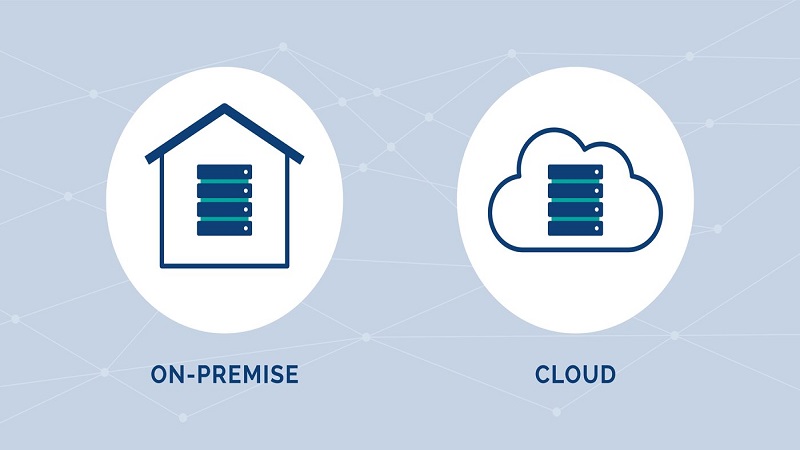Is your firm tangled in a larger volume of transactions daily? Are you looking to analyze years of historical data from multiple sources to predict trends, enhance decision-making, and meet customer needs? Yes, that’s fantastic! You’ll need a data warehouse. Think of a data warehouse as an essential hub where businesses can stock and examine data to create well-informed decisions. The data is frequently tracked from in-house applications and databases and accessed by different individuals depending on their requirements.
Many company intelligence and computational methods utilize this data to provide decision-makers with valuable insights. Transactional communication database systems (OLTP) allow for actual time transaction execution across various databases but may not be ideal for extensive mathematical processing. Data warehouses are suitable for business intelligence and reporting purposes as they help separate predictive analysis from transactional databases and enable faster processing of large amounts of data using different storage styles.
What is the concept of On-Premises Computing?
The conventional computing approach known as on-premises computing entails an organization’s ownership and operation of its own hardware and software infrastructure. The infrastructure above is often situated inside a data center located at the organization’s premises.
What is the definition of Cloud Computing?
Cloud computing is a contemporary computer paradigm whereby an entity delegates the responsibility of managing its hardware and software infrastructure to an external service provider. This supplier hosts the infrastructure in a geographically distant data center and, after that, is accessed by the enterprise over the Internet.
Well-functioning Data Warehouse provides numerous benefits
- Staying Consistent is Key
Transforming data from various sources and formats into a unified standard format simplifies analysis, reporting, and sharing insights on the complete data. Consistent data within your company is essential for optimal utilization by all team members for querying, analyzing, and reporting purposes.
- Core Focus
Moving to a data warehouse offers another compelling reason: centrality. Many companies must consolidate data from various sources constructed on different platforms to generate valuable insights. By consolidating data into a single repository, data warehouses make all the company’s data available from a single place, addressing this issue.
- Ensuring Accessibility
Accessibility enables every employee to make informed data decisions. With all data centralized, every employee has seamless access to information throughout the organization. By doing so, it eliminates the obstacle to fully leveraging the data in the database. Here neither the knobs nor the settings may be adjusted any further at this point. There are no distributions of keys, gauges, manual files, sealed operations, statistics collecting, or other similar features. You can adjust hundreds of parameters to optimize performance on a platform of zero iteration and, to a lesser extent, the first century.
- Recovery from Disasters made Easier
Cloud-based backups and disaster recovery solutions provide data redundancy and high availability, therefore reducing the amount of time that information is unavailable and assuring the continuation of corporate operations. It is essential to do this to maintain communication with stakeholders and consumers.
The process of disaster recovery is dependent on the expansion of data and computer processing at a place that is off-premises and is not experiencing any impact from the event. A company has to be able to restore lost data from a second place where the data is backed up if servers become unavailable due to incidents such as a natural catastrophe, a malfunction in the technology, or cyber risks. The ideal situation is for a business to move its computer processing to that distant site as well so that it continues to function normally.
- Decreased Expenses
When it comes to cloud computing, the quite effective technique for lessening expenses is to stop creating the original investment in overpriced hardware that is needed for a conventional on-premise data warehouse. In addition, you may pay for just the amount of storage and processing that you use rather than overprovisioning during times of high demand. Furthermore, many cloud data warehouses offer a pay-as-you-go pricing type, which lets businesses be paid depending only on the amount of resources that they use.
Case Studies
Exemplary instances of successful implementation of cloud and on-premises data warehousing
The study of case studies that demonstrate the achievements of cloud and on-premises data warehousing models offers significant insights into the practical implementations and advantages associated with each methodology. Through the analysis of these case studies, enterprises may get a more profound comprehension of how other entities have used data warehousing solutions to accomplish their distinct aims and objectives.
Flipkart and Zomato have achieved notable enhancements in data accessibility, scalability, and cost-effectiveness by transitioning their data architecture to cloud-based platforms in the field of cloud data warehousing. In contrast, organizations such as Google Pay and Enterprise Carwale have shown the importance of retaining complete control and safeguarding their data assets by keeping their data warehousing technology inside their facilities.
The above case studies demonstrate the efficacy of on-premises data warehousing systems in enabling enterprises to tailor their data environments, adhere to industry-specific requirements, and enhance data performance and dependability. Organizations are increasingly embracing cloud infrastructure as a means to mitigate the potential for data loss, reduce vulnerability to security, and enhance operational adaptability.
On-Premises versus Cloud: Which is Right for Your Business?
The ideal method for a company to choose the appropriateness of cloud computing as opposed to on-premises computing is to consider the distinct demands and necessities at hand cautiously. Cloud computing is a viable choice for companies seeking reduced initial expenses, enhanced scalability, and improved accessibility. If you want stringent oversight of your security and compliance measures or desire to tailor your hardware and software, then opting for on-premises computing may be more advantageous.
When making a decision, it is crucial to take into account both budgetary constraints and IT proficiency. Cloud computing is an optimal selection for enterprises operating within constrained financial resources since it entails just remunerating for the specific services used. While on-premises computing may incur higher costs, it might be a more advantageous choice for firms that own a substantial IT staff capable of overseeing and upkeeping their infrastructure.
Bottom Line
Eventually, the choice to opt for cloud data warehousing solutions over on-premises is highly dependent on the company requirements and urgencies of every business. By considering the benefits of every model, firms could create an informed decision that is in line with the longer-term data administration approach.
If you are looking for more information on this subject, check out https://realitypaper.com/











